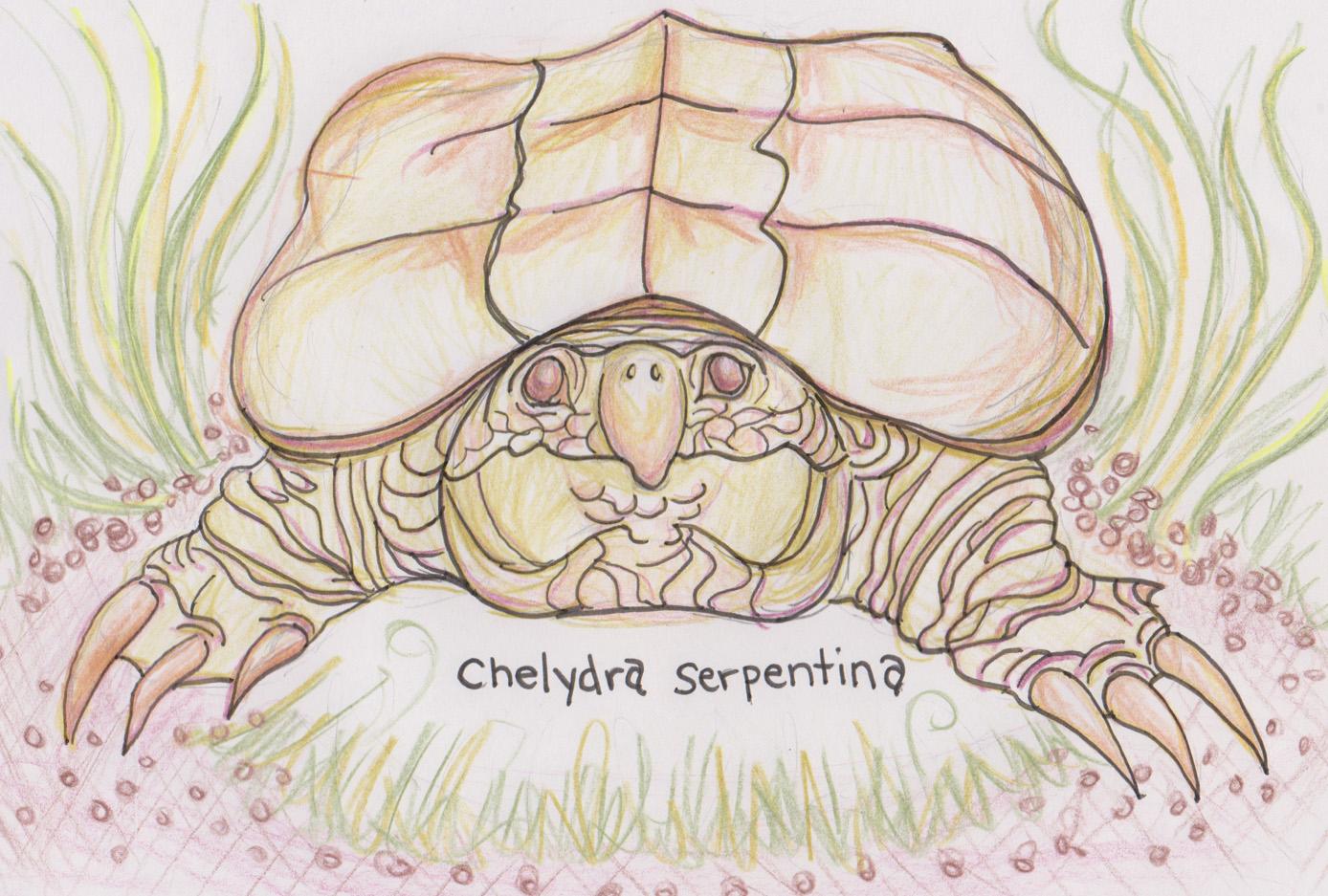By Bob Suchanek, Waters and Wetlands Steward

The Common Snapping Turtle
Drawing by Ruth Lein, used with permission.
I met my first turtle when I was six years old. My grandmother and I were fishing in the river near our home, hoping to catch supper (or at least a treat for the neighbor's chickens). It wasn't long before my cork dived and raced through the water. Maybe a big carp? Instead of a fish though, a long necked, sharp clawed, and clearly displeased beast was on my line! I remember the beast emerging, my grandmother pulling, the line breaking and the beast submerging. My grandmother called it a Snapping Turtle. I thought that turtle was huge!
Snapping Turtles are the largest turtles in Minnesota. A typical snapper is about a foot long (8-14 inches) and weighs from 10 to 35 pounds. The biggest known Snapping Turtle in Minnesota was just over 19 inches long and weighed 65 pounds. Baby Snapping Turtles, called hatchlings, are an inch long and weigh about a third of an ounce.
Snapping turtles are omnivores, eating animals (alive or dead) and plants (aquatic). Their menu includes anything they can catch, including live frogs and fish. Catching a frog or fish requires speed not normally associated with a turtle's way of life, but it turns out that speed isn't a problem. The German zoologist August Schweigger saw something extraordinary in this common turtle when he named it serpentina . A patiently waiting turtle can explosively extend its snakelike neck nearly a full body length forward to snap up its prey. Once snapped, its jaws exert a force of nearly 150 pounds per square inch, ensuring that a fresh meal is secured.
My grandmother told me stories of life during the Great Depression, including one about huge Snapping Turtles caught in our river and chained up until they were butchered and cooked. The Snapping Turtle has continued to be harvested for food in Minnesota by a limited number of licensed commercial turtle meat dealers. In 1984 it was listed as a species of special concern by the Department of Natural Resources but delisted in 2013. A bill (HF387) blocking the issuance of new commercial turtle harvesting licenses was passed this year by the Minnesota State Legislature.
Turtles belong to an ancient reptile group. The bones of the first relatives of today's Snapping Turtle have been found in rocks laid down when dinosaurs considered turtles to be crunchy snacks. They are survivors, but like so many other species they're susceptible to human exploitation.
Turtles are symbols of unwavering perseverance and connection to the earth. The Anishinaabe people tell a story about a time before their ancestors came to the world. According to the story, there was a great flood on Mother Earth and all of the land was covered with a deep and vast ocean. After the flood, the surviving animals searched for a place to live but there wasn't any land to be seen. Diving into the depths, Muskrat brought up new soil, but someone was needed to carry it. In the end, Snapping Turtle offered its shell and Turtle Island became a home for everyone.
I don't remember being afraid of the turtle that I caught so many years ago, in spite of its size and snappish disposition. What remains is a sense of awe and respect for this feisty and determined critter that carries the world on its back.
Some sources:
https://www.saulttribe.com/images/Anishinaabe_Teachings_of_the_Turtle_Mikinaak.pdf
https://www.pca.state.mn.us/common-snapping-turtle
https://www.dnr.state.mn.us/reptiles_amphibians/turtles/index.html